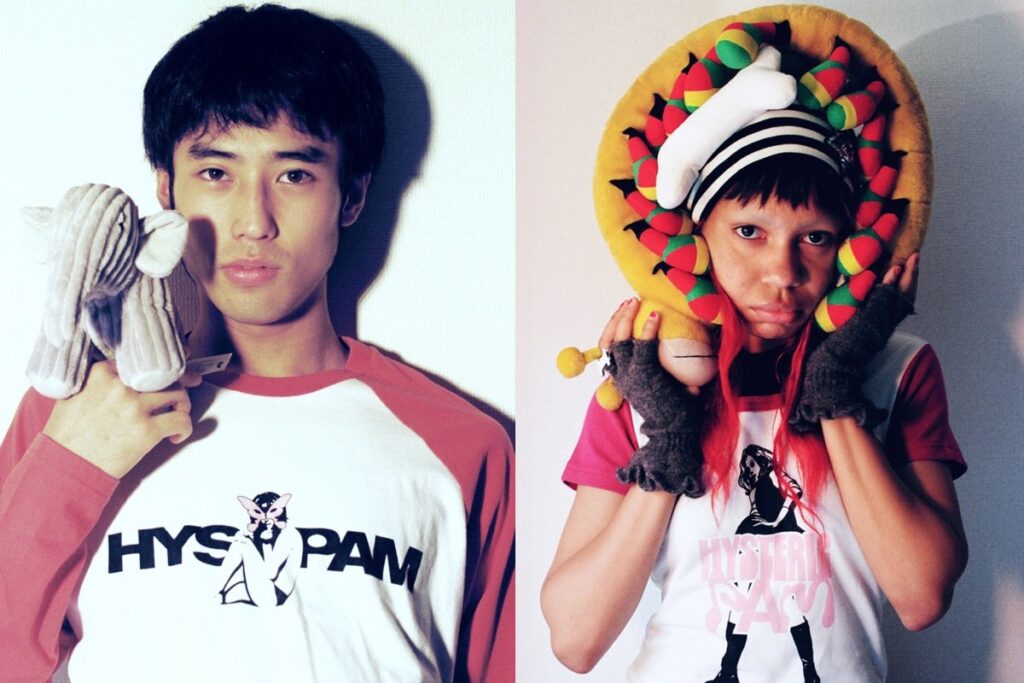Hysteric Glamour, a notable figure in Japan’s fashion revolution since the early 1980s, emerged as a trailblazer amidst streetwear brands like BAPE and X-Large. Hysteric Glamour not only participated in this movement but also pioneered independently, embracing the concept of “New Americana.” Rather than simply copying Western styles, Hysteric Glamour infused them with a distinct Japanese perspective. The brand broke conventional fashion rules, daringly and provocatively, “unconventional by tradition.”

Inspired by the anti-war protests of the 1960s, Hysteric Glamour depicted contrasting figures prevalent during that era: peace-loving hippies clad in colorful bell-bottom jeans juxtaposed with soldiers forced into war. Despite playing a significant role in Japan’s fashion and streetwear scene, Hysteric Glamour often remains underrated and underappreciated. It occupies a unique position in Japan’s fashion world, unlike renowned designers like Issey Miyake or Rei Kawakubo, but paved the way for iconic names like Hiroshi Fujiwara and Nigo.
The creative mind behind this iconic brand, Nobuhiko Kitamura, drew inspiration from various aspects of American culture from the 1960s and 70s – cars, art, the hippie movement, and Vietnam War protests. During Japan’s economic boom from the mid to late 1980s, Kitamura, like many youths, seized the opportunity to establish his brand. Hysteric Glamour emerged as a pioneering Japanese streetwear label, combining creative finesse with a rich visual language, paving the way for future designers. Kitamura’s passion for music, especially new wave records, guided him on a unique creative journey. Enrolling in the Tokyo Mode Gakuen Fashion School, he diverged significantly from his peers, who favored designers like Yohji Yamamoto and Comme Des Garçons, drawing inspiration from them rather than vintage clothing and mass media like Kitamura.
Launching Hysteric Glamour in 1984 under the protection of Ozone Community, Kitamura’s designs quickly garnered attention for their sincerity and distinctiveness. Unlike its competitors pursuing a commercial path, Kitamura opted for an approach to attract like-minded individuals, shoppers at thrift stores, and punk music enthusiasts. Hysteric Glamour’s in-house production helped maintain stable prices, making its products more accessible to many. The brand shone globally, opening its first store in Greenwich Village, New York, in the late 1980s, attracting attention from icons like Keith Haring and Iggy Pop. The brand’s global reputation led to collaborations, especially with Sonic Youth, seamlessly blending with the style and music of the grunge movement, evidenced by Kurt Cobain wearing a Sonic Youth t-shirt during his final performance in Munich in 1994.
Expanding into artistic collaborations, Hysteric Glamour engaged in various projects with renowned artists like Andy Warhol and Terry Richardson. In 2003, the brand even appeared in Sofia Coppola’s cult classic film, “Lost In Translation.” Despite existing for decades and continuing to expand its influence with brands like Supreme and Kiko Kostandinov, Hysteric Glamour still maintains its sub-culture essence and origins. Understanding its unique audience, the brand continues to recycle and reuse vintage graphic prints, preserving its uniqueness and durability. Hysteric Glamour’s great legacy is a testament to its unwavering commitment to street art and its relentless creative spirit.


